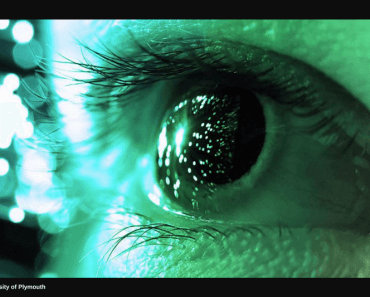We don’t see the world as it really is, but as we expect it to be, according to a new study from researchers at the University of Plymouth.
In a series of experiments, the Plymouth research team found that humans perceive other people’s actions through a predictive bias.
In other words, when we watch someone move, we do not see their movements exactly as they happen. Our perception of their action is slightly distorted by what we expect them to do, based on contextual clues.
“From early in infancy, humans exhibit the remarkable ability to perceive others’ actions as agentive and intentional, as if we can directly see their goals, intentions, beliefs and emotions drawn onto the actions that they perform,” said lead researcher Matthew Hudson.
“However, this is exceedingly difficult, as other people’s movements are not always informative about what they want to achieve. We must rely on the context in which the action is performed to allow us to interpret and understand how the other person’s behavior relates to their mental state.”
As a result, we quite literally project how we expect someone to behave onto them.
In experiments, 85 participants watched a series of videos of a hand reaching for a ball.
In each of the videos, the hand would suddenly disappear. Participants were then asked to touch the spot on the screen where they believed the hand was last located when the image disappeared.
When the participants estimated the hand’s location, they tended to miss the mark. Their estimations of the hand’s location tended to be further along the trajectory of the hand’s movement than it actually was.
In some of the videos, there was an obstacle placed between the hand and the ball. In order to reach the ball, the hand would have to move in an arched trajectory over the obstacle. Again, the hand would disappear mid-trajectory, and the participants were asked to guess the last location of the hand.
In these cases, the participants again missed the mark, though this time they tended to anticipate the hand moving in an arched trajectory. They guessed that the hand was located further upwards than it actually was.
These results show that the participants were anticipating how the hand would move, and their expectations for its movement would influence where they believed the hand was located. They were not seeing the hand where it actually was, but where they thought it would be.

Hudson said that the study demonstrates that humans perceive others’ actions as goal-directed and rational.
It shows that our brains work as predictive machines that use context clues to interpret and understand not only what someone is doing in a given moment, but what they are thinking, and, based on that assumption, what they will do.
“These results reveal that these expectations do not remain abstract or conceptual, but generate a concrete mental image of how they will behave,” Hudson said. “By making these expectations perceptual, they can be ‘painted’ onto what we actually see, almost making visible that person’s state of mind.”
“This also makes it far easier and quicker to identify when we are wrong, and any difference between what we expect and what we see allows us to re-evaluate what we thought of the other person’s state of mind.”
These kinds of predictions are necessary for everyday interactions between people.
“For example, if we want to do a joint task like catching a ball that someone throws to you, it helps if you already see, in your mind’s eye, what the other person is going to do,” Hudson said in a statement.
Hudson also suggests that the predictive function of the brain also gives us the ability to interpret — and misinterpret — people’s actions and emotions. For example, during a conversation with a friend, if you anticipate them being angry, you might project this anger onto them and quite literally see their expression as being angrier than it actually is.
Understanding how the brain processes emotions in this way could also help us better understand how people with social disabilities, such as autism, struggle to read others’ actions, emotions and intentions.
“This ability [to interpret people’s behavior] is crucial for the development of the sophisticated social cognitive abilities of humans,” said Hudson.
“An inability to do so may have important implications for those with autism, for whom social interactions can prove especially problematic.”



